Overview of the new Santa Fe
Material content
What has changed outside?
So, first let’s take a look at the exterior. At the front, attention is drawn to new bumpers and a radiator grille that visually flows into the main headlight unit. The grid has become wider. The slots in the combs are so large that a small boulder can easily fly through them (the problem, however, is solved by installing a protective mesh). The two-story head optics have also been redesigned. Dipped beam moved higher, LED daytime running lights are now made in the shape of the letter T (Volvo has something similar). Looks spectacular, especially at dusk. At the same time, even in the most expensive configuration there is no swivel low beam and headlight washer.
The rear changes are not so obvious. A red strip appeared connecting the LED lights. It does not carry a functional load, being one of the design elements. The rear turn signals remained in the same place – in the lower part of the body, which can cause some inconvenience for drivers driving behind. When standing in a traffic jam or at a traffic light, the flashing yellow light is simply blocked by the hood.
The design of the updated Santa Fe can be called controversial, but definitely not faceless. The car attracts the eye and will not get lost in the motley traffic flow.
In terms of external dimensions, the crossover is minimally different from the previous version. Due to the bumpers, it has barely noticeably grown in length (4785 mm) and width (1900 mm). The trunk received an additional 9 liters in the five-seater version (634 liters) and 24 in the seven-seat version (571 liters with the third row folded down). But the clearance has decreased by almost a centimeter, to 176 mm – this is the fee for switching to a new platform.
Of the external changes, one can also note the extended wheel arches and 20-inch wheels available in the top configuration. The former maximum is 19 inches.
Video
Now on the wire
The interior was redesigned in a similar way. A “floating” center console a la was placed on a familiar frame Flagship Palisade, dividing the front of the cabin into two cockpits. As a result, a completely different perception of design and organization of space. The Koreans themselves, for example, compare the updated environment with a modern lounge.
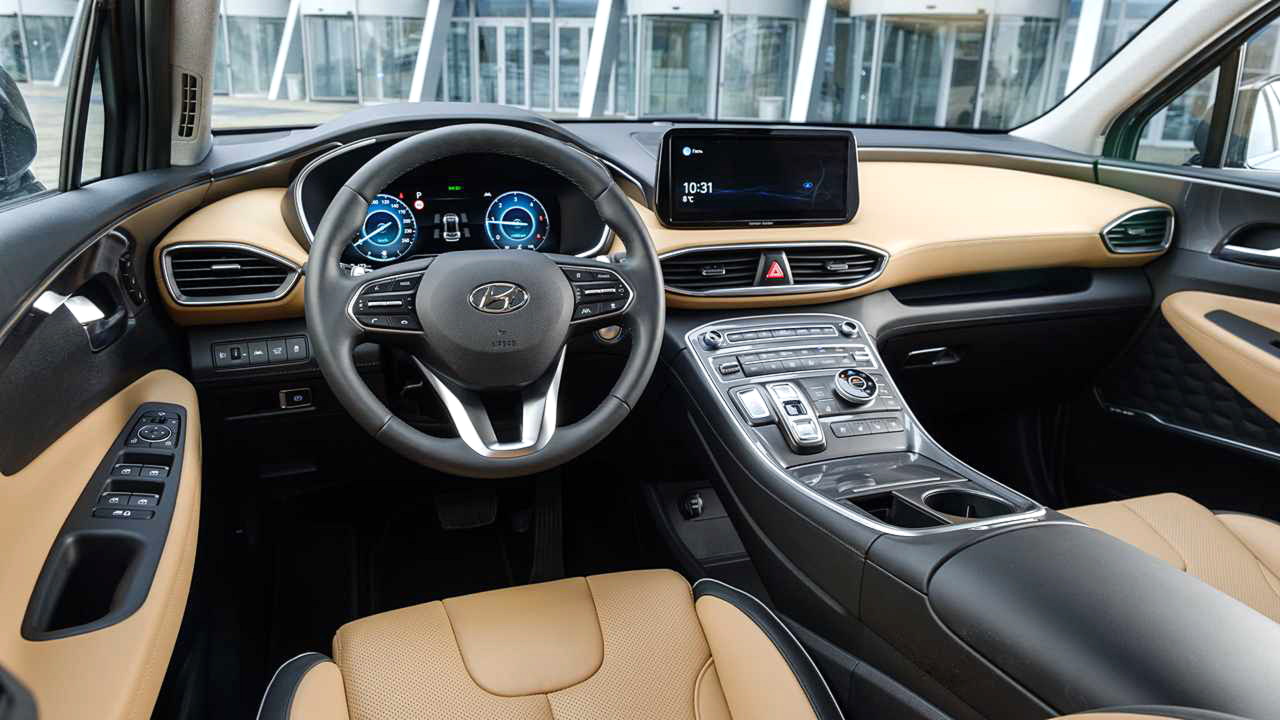
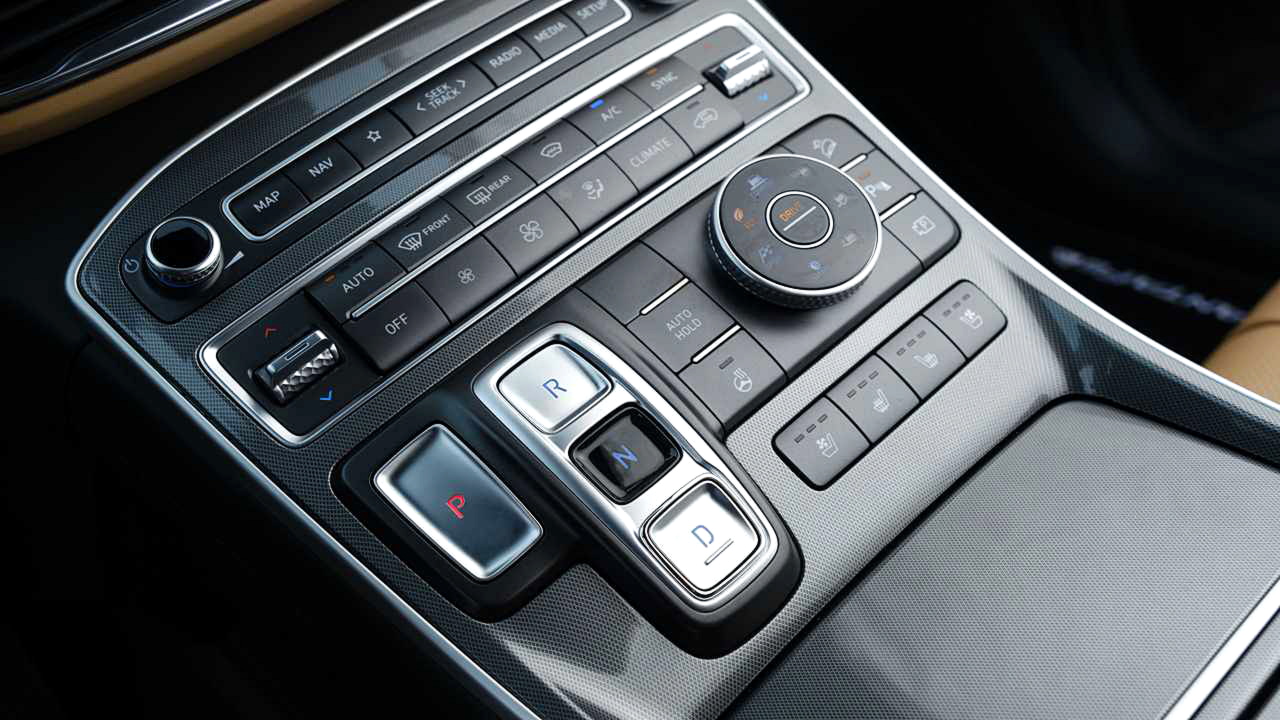
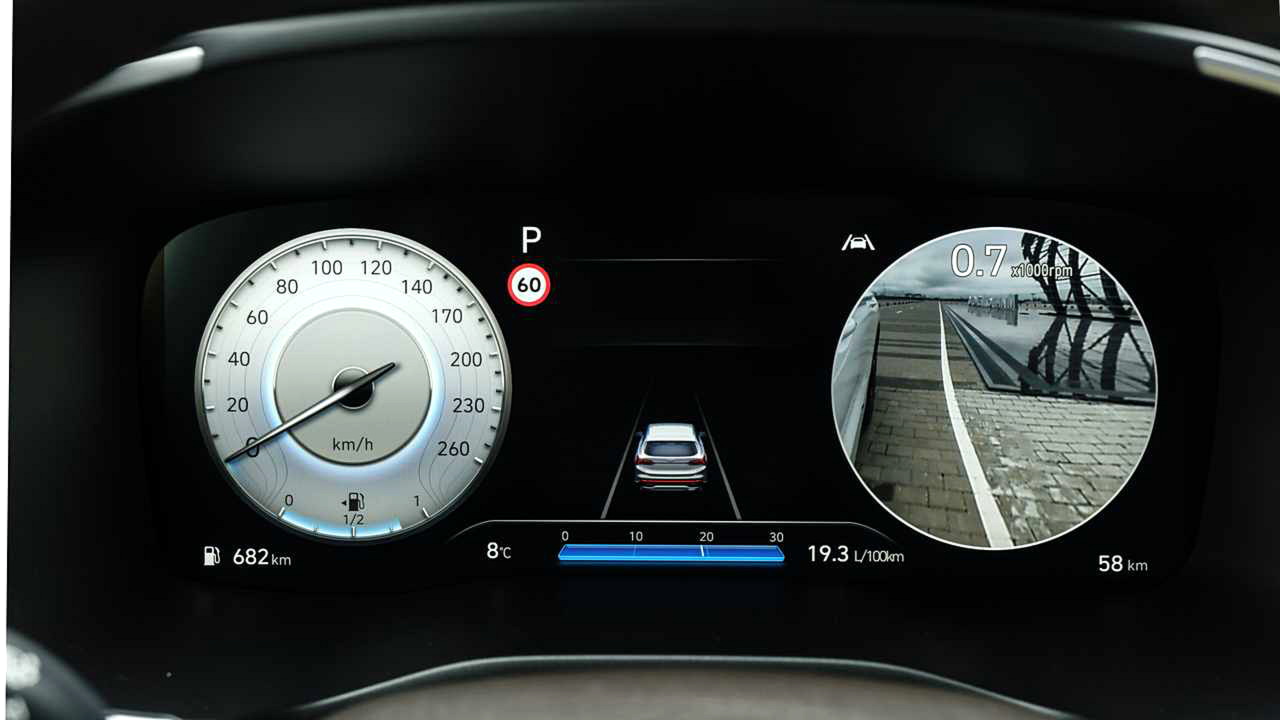
The bright sun makes the bright characters on the gray background of the keys barely visible, the push-button transmission control panel takes some getting used to, but on the whole it turned out conveniently and definitely didn’t get worse than before. The main switches are large, “twists” and toggle switches are grasping, right at hand. On the lower level there is a shelf with sockets (USB and 12 volts), on which, as the developers fantasize, the ladies will store removable driving shoes.

In the interior design, they tried to focus on premium materials: pay attention to the diamond-shaped stitching of leather in the Mercedes style. In the dark, contour lighting with a choice of 64 colors creates the right atmosphere.
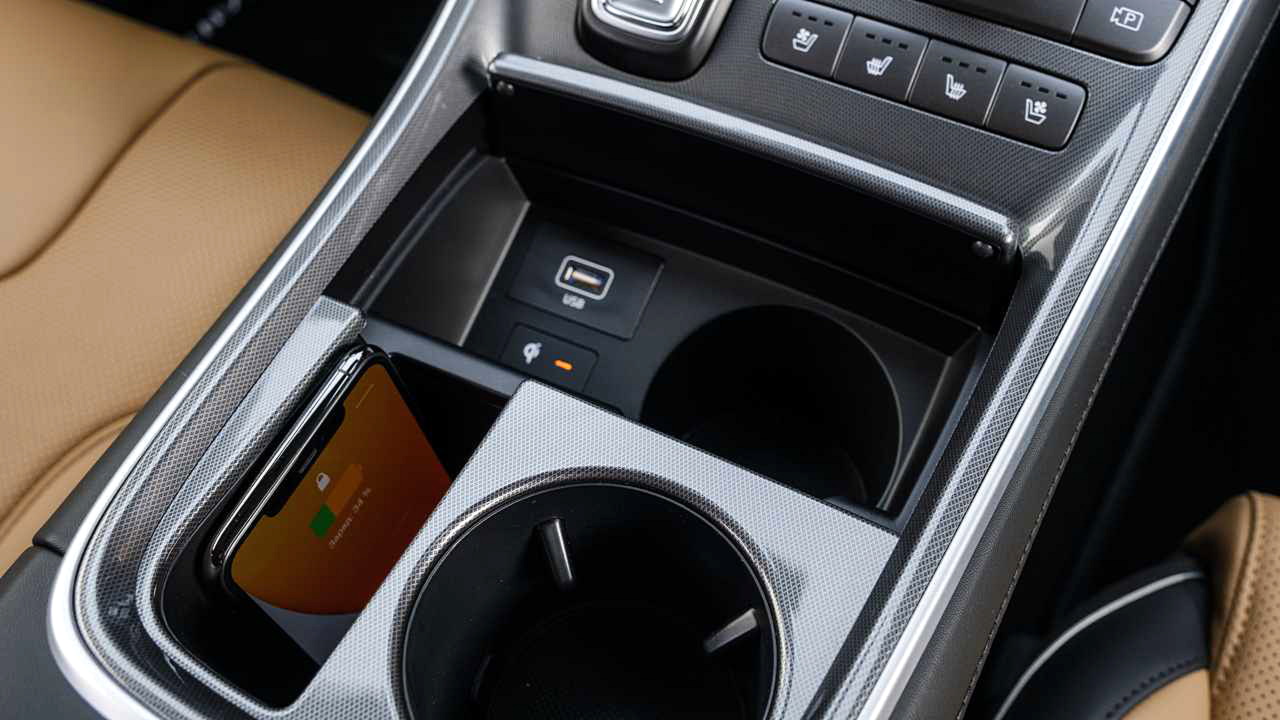
The pocket next to the cup holder is also vertical wireless charging. Moreover, it is powerful – at 15 watts, smartphones cannot accept so much yet. But the Koreans worked for the future.
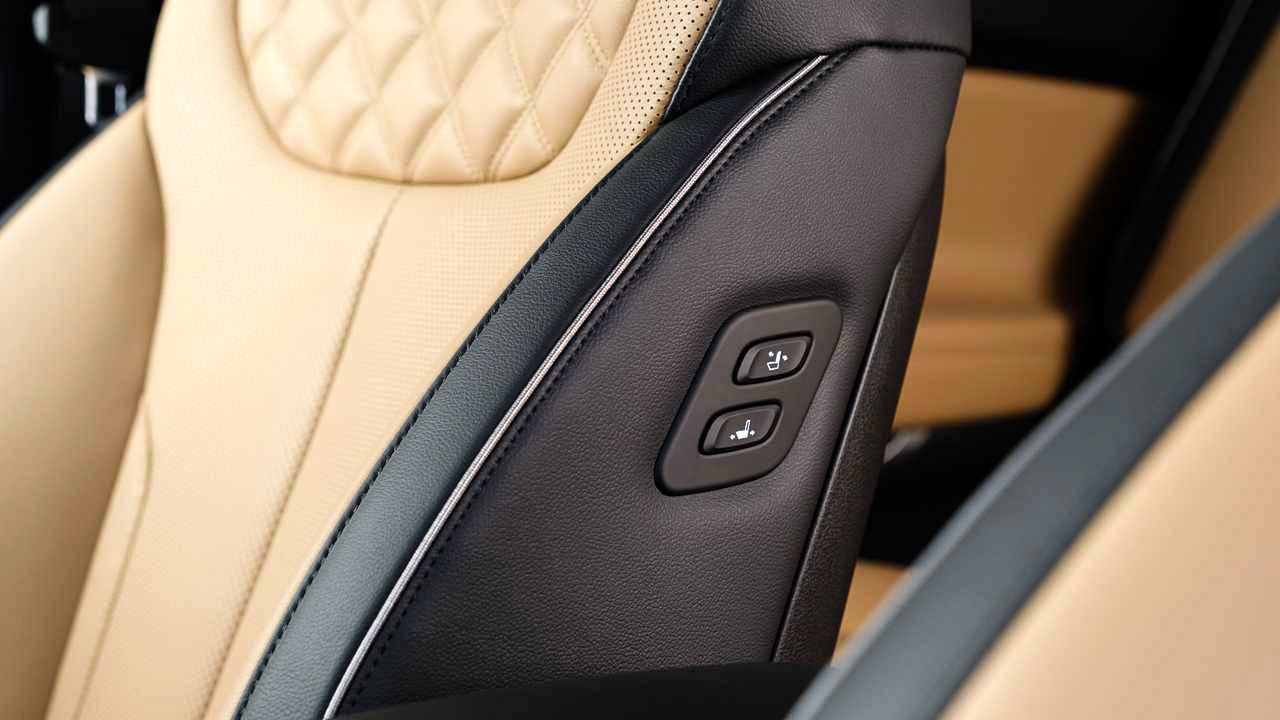
A traditional Hyundai feature: you can control the position of the right front seat from the back row.
Of course, they upgraded the equipment (the windshield heating was not enough before) and multimedia solutions, among which stand out a fresh head system with “sounds of nature” (we talked about it more than once) and a fully digital Full HD dashboard with a bunch of information display topics. There are frankly useless ones among them, like animated cubes with numbers. But possible inconvenience is compensated by a successful projection display that displays everything you need for driving. In other words, the design was skillfully synthesized with ergonomics.
Three motors, three boxes
Passion for travel is a reason to carefully choose the power plant. I must say right away: with any of them, Santa Fe does not turn into a “vegetable” or a hurricane (acceleration to hundreds fluctuates between 8-10.3 s), but it is the fast and difficult roads that convexly reflect the nuances that do not make the weather in a cramped city.

New 2.5-liter “four” of the Smartstream family with distributed fuel injection (180 hp and 232 Nm) – the most affordable option in the line, from 2 479 000 rubles. It drags, tries, however, the more rugged the terrain or the higher the speed and more often overtaking, the more difficult it is for the agile six-speed automatic to maintain the proper margin under the right pedal. At highway speeds, kick-down is in the order of things, the tachometer needle is knocking on the red zone, the acoustic idyll is expected to crumble. In other words, this version is for those who do not tolerate fuss and appreciate discretion. Well, or just save.
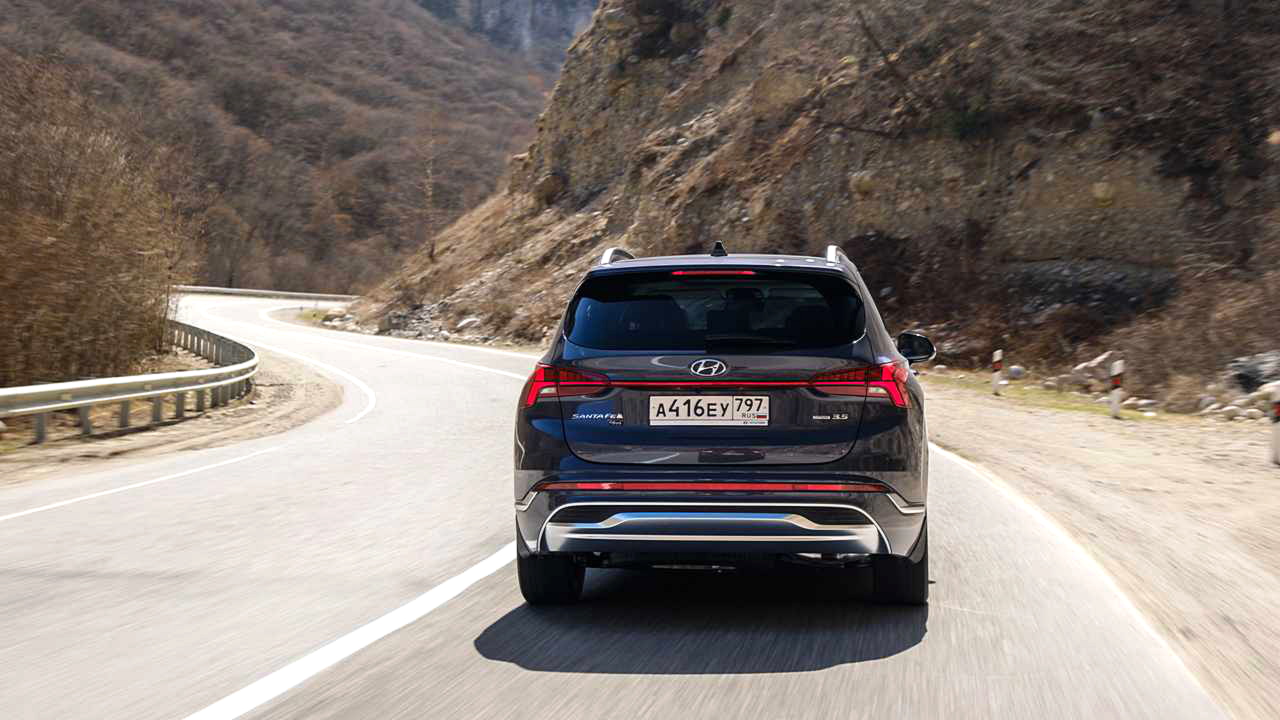
Top V6 MPI of the Lambda family (249 hp and 332 Nm) is a prestigious classic that at first seems like a strange purchase. Why overpay for power, a modern eight-speed automatic and the most pretentious equipment (price – from 3,299,000 rubles), if the difference with the junior motor is barely perceptible?
The answer comes on the highway: the 3.5-liter Santa Fe rolls without straining at all: you go literally at “half-pedal”, which demonstrates fuel consumption – about six liters of 92 gasoline per 100 km, while 2.5 asks for about 9 -10. And the limiting capabilities of the “six” are much higher – the pace of movement ceases to be a purely technical issue. Another thing is that under load, the picture of efficiency changes dramatically and double-digit numbers begin to flash on the display.
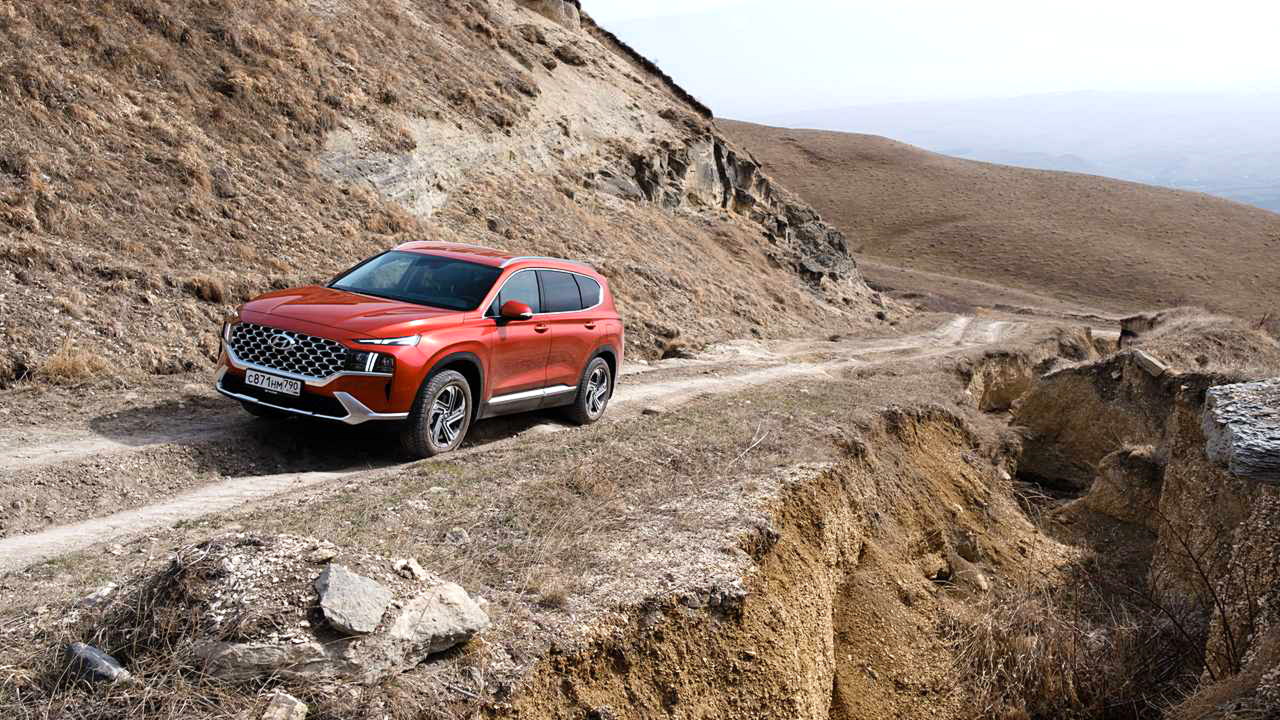
Large honeycombs of a massive-looking lattice jeopardize the safety of heat exchangers. Caring owners and travelers have reason to consider installing a safety net.
And outside the asphalt, there is another misfortune – in some places there is suddenly not enough traction. Moreover, the situation is ordinary for the Caucasus: the dirt serpentine in the vicinity of Elbrus is quite steep, but not slippery. Tourists have chosen a picturesque road through the pass just for the accessibility for slightly off-road vehicles. On the Santa, we first had to turn off the anti-slip control – a strict stabilization system unnecessarily choked the engine. Then it was the turn of the sport mode in the box, since Smart’s skillful automatic algorithm could no longer adapt to the terrain. And only in this way, at high speeds, Santa Fe confidently crossed the ridge.
The Santa Fe offers a selection of asphalt and off-road driving modes, downhill speed control assistant, but the center clutch lock button is gone. They say this is a feature of the updated cars from the first batch, and soon the possibility of forced activation of 4×4 will be returned.
The most balanced power plant and at a price (from 2 789 000 rubles), and by ability I will name new 2.2-litre Smartstream turbodiesel (lightweight, all-aluminum motor with cast-iron cylinder liners) paired with an eight-speed robot.

The diesel received camshafts on needle bearings. In the event of a breakdown, the block head will have to be replaced as an assembly.
Yes, such a “Santa” does not tear from its place – the electronics hold a slight pause, protecting the “wet” clutches from shock loads. And on the track, the “solar” crossover is not able to bring down, like a V6 – at high speeds, the 199-horsepower diesel engine is empty. But in the most running modes, the motor pleases with juicy, confident traction (440 Nm at 1750-2750 rpm), and the preselective – with lightning-fast switching. It is unnecessary to talk about fuel consumption – 7-8 liters, taking into account off-road.

Moreover, the diesel “Santa” got the most viscous area with sticky wet soil – and nothing. The transmission withstood the slip. By the way, Koreans understand the skepticism of the audience towards robots. Yes, and logistical problems with similar Kia Sorento, which did not immediately reach the buyers, spoiled the image. Therefore, Hyundai ordered the testing of a ready-made box to Russian specialists from the NAMI test site. Pre-production sample of the crossover in camouflage forced march and at full load drove on special roads, after which they assessed the wear of oil, parts and made a conclusion – everything was within the limits of what was permitted. Believe it or not – you decide.
Interior: close to premium
The interior of Hyundai Santa Fe 2021 with a new body has undergone some changes. The most obvious difference in the photos is the redesigned center console, which replaces the traditional selector lever with a push-button gearbox control. In addition, the interior is able to please the digital instrument panel with a 12.3-inch screen, already present in the basic configuration. And the creators of the new model promise an interior without hard plastic.
The seats have been technically modified to add 34mm to the legs of the second row passengers. At the same time, the trunk volume even increased slightly to 634 (+9) liters. As expected, the multimedia complex was significantly expanded, with a 10.25 (+8.25) inch display. The central tunnel provides additional storage capacity for small items.
Small mirrors, shoals of dealers and a “squeezed” branded cup from the center console … – the owners of “Santa” have a lot of small claims, but even more emotions, and positive ones.
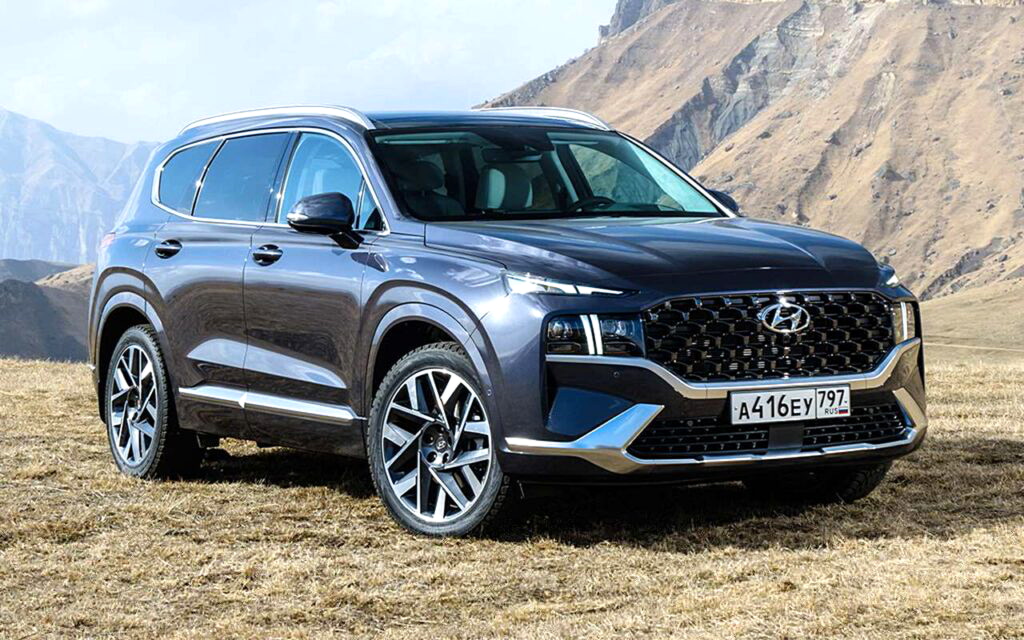
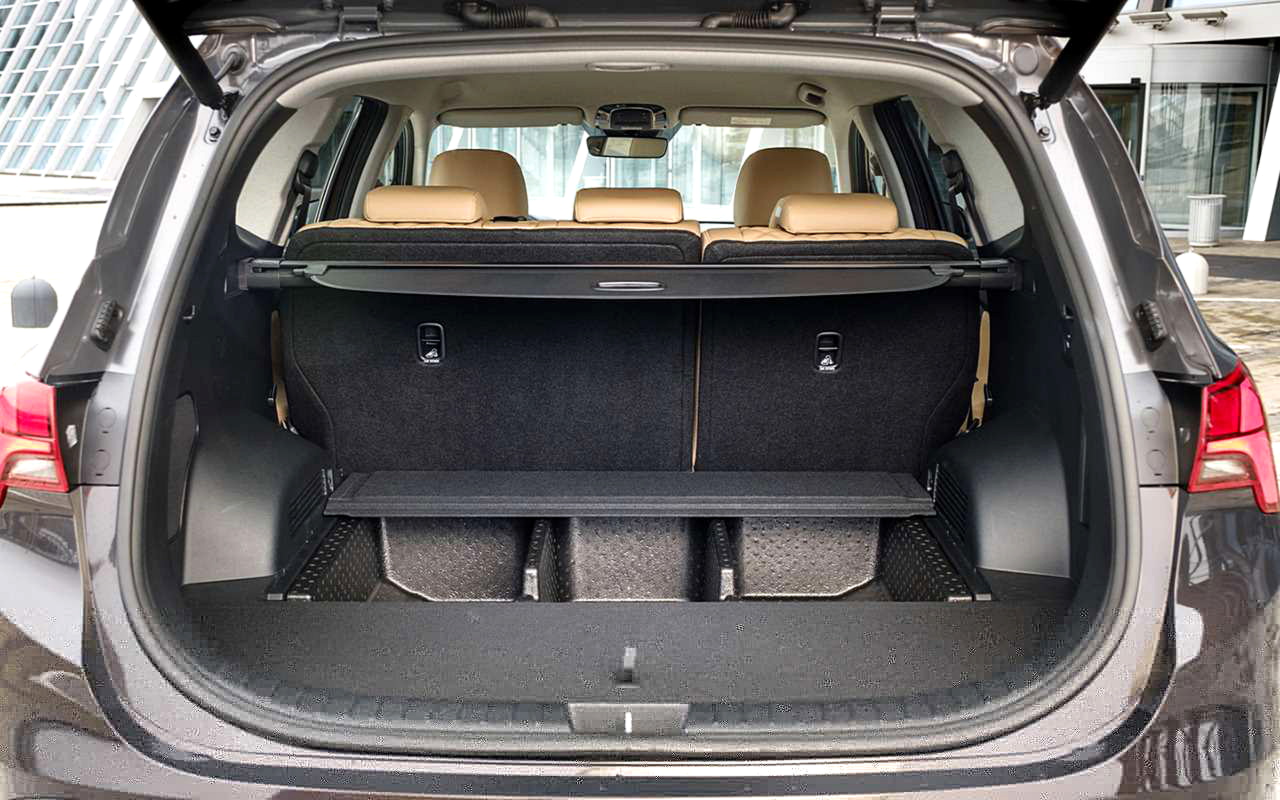
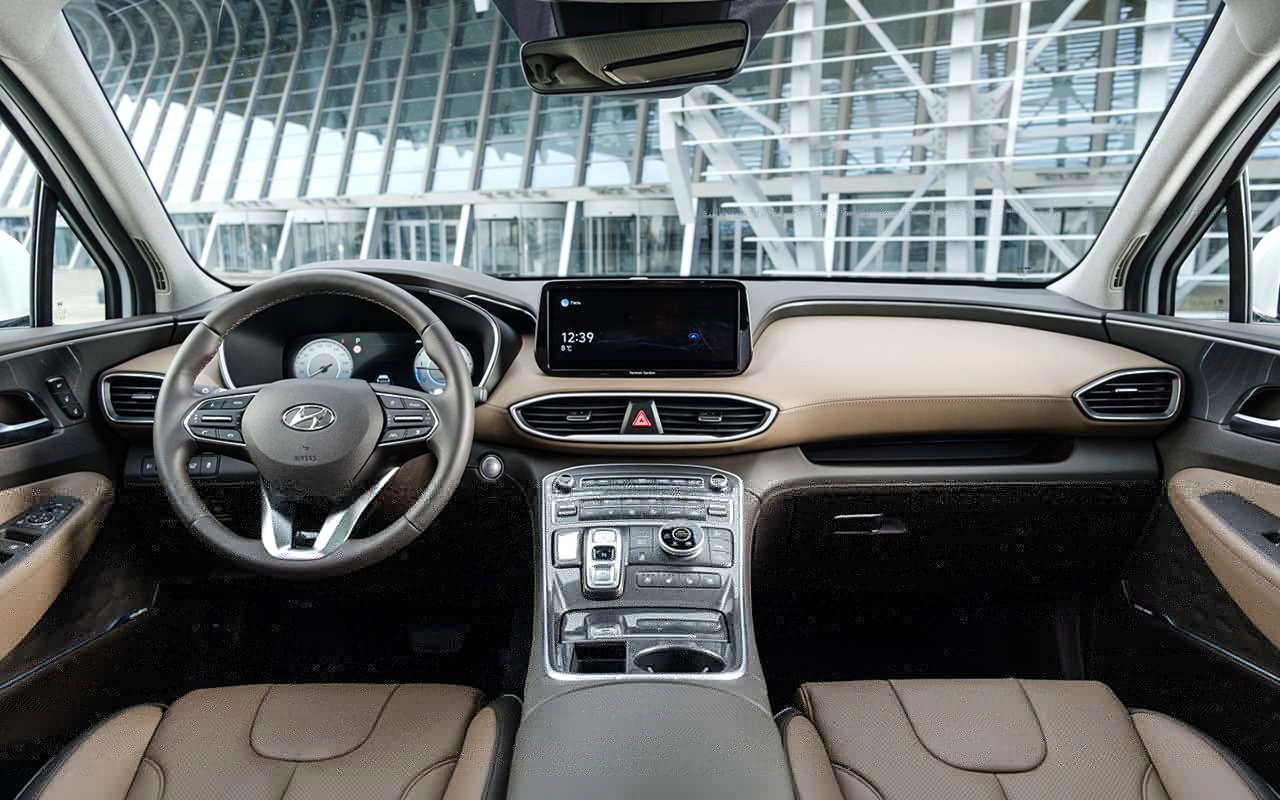
And how does he drive?
We tested the 2.5-litre naturally aspirated version. What can I say: for a large family crossover with a partial load, the power is enough. The motor allows you to feel confident when overtaking, but of course, it does not cause a desire to anneal and frolic.
If the crossover behaves quite imposingly in Eco mode, then it is worth switching the puck to the Sport position, as the electronic tidy flashes red, and a spark appears in the engine-transmission connection. After the overtaking is completed, the revolutions are kept in the range of 3-4 thousand and the car is again ready for sharp accelerations.
Engineers have worked on soundproofing. The Santa Fe’s cabin is quiet. The increased rumble breaks through only during vigorous overtaking and on mountain serpentines, when the machine switches to a lower gear.
In Russian-language reviews, one can find complaints about the excessive stiffness of the suspension. Perhaps the “twentieth” wheels on the test cars are partly to blame for this. We had 19-inch wheels, and we felt quite comfortable on the steppe primer.
All Santa Fe trims are equipped with all-wheel drive, and in versions 3.5 MPI and 2.2 D there are additional modes “Snow”, “Mud” and “Sand”, which adjust the transmission parameters to road conditions. And yet, you should not expect bright feats on the roads from the crossover. Everything spoils the ground clearance of 176 mm. Do not forget that in front of us, first of all, is a large family car, and not a brutal SUV.
What about actual fuel consumption? Petrol 2.5 MPI on the highway showed 7.2 liters per hundred, in the combined cycle – 8.6. By the way, you can pour 92nd gasoline into Santa Fe.